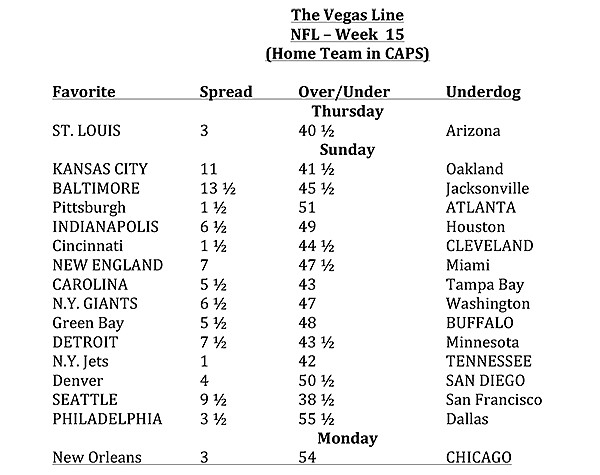 Facebook
Facebook
 X
X
 Instagram
Instagram
 TikTok
TikTok
 Youtube
Youtube

Tricky topic. Civilians and athletes have different tolerances when it comes to pain, although, counterintuitively, they have similar “pain thresholds” (the point where pain begins to be felt). According to a research article in the June 2012 issue of the wonderfully named publication The Journal of Pain, athletes have a higher pain tolerance (the maximum amount of pain a person can stand) than civilians who maintain normal activity levels.
One wonders what a normal activity level is. Does it correlate with a vocation? What’s the activity spread between an office worker and a steelworker? For athletes, one wonders what it takes to be considered an athlete... Is the person a backup player in a city league, a nationally ranked amateur, a college star, a semi-pro wannabe, or a professional athlete? Does it matter which sport the athlete or civilian plays?
For civilians, one needs to make a quick calculation when deciding whether to play through pain. How bad is it? How much of a hassle will it be to leave the game and attend to the injury. Do you have insurance? Who’s watching you? Spouse, girlfriend, boyfriend, teammates, employer? Do you care what they think?
For athletes, how serious is the injury? Is this sport a job? If it’s a job, what are the politics? Who’s going to play in your place? Is he good enough to take your job?
If you ask any one of the 1696 active NFL players if they are in pain, you’d never get a straight answer. If, magically, you did, I’d guess every single one of them would say they were in pain. Coach-speak says you can play through pain, but don’t play with an injury. It’s a verbal sleight-of-hand that shifts the responsibility from coach to player.
A Gabe Kapler article found on Fox Sports quotes a big-league baseball trainer saying, “People have different perceptions of what is an ‘injury.’ Some players won’t play unless they’re 100 percent. Sometimes this is their nature and sometimes it is the business of baseball. There is too much money involved and current players don’t want to play at less than 100 percent and risk performing poorly.... Agents are also a factor, oftentimes advising players to not play through pain.”

NFL Week 15
Cut to chase: What are our odds of getting hurt?
I’ll start with the NFL and hurry through. The NFL and injuries have been done and redone. Last year the Washington Post did a big series on this and I’ve mined some tidbits. The newspaper surveyed 500 retired NFL players. Nine of ten suffer from aches and pains on a daily basis. Nine in ten said they had concussions.
Six in ten said they had had three or more concussions. Nine in ten reported suffering one major injury. More than half reported three or more major injures. One in five reported five or more major injuries. Almost half, 44 percent, said they have had a joint replacement or been told they’ll need one.
Who gets hurt the most in the NFL? What position is the most dangerous? Results are broken down to average number of plays per injury.
And the Most Dangerous Position is...tah-dah!...Special Teams. Players on special teams are injured at the rate of once every 50 plays, which translates to more than one injury per game.
Running backs are injured once in 52 plays; fullbacks, once in 70 plays; wide receivers/linebackers, once in 80; tight ends/defensive line, once in 90. Defensive backs are injured once in 105 plays; offensive line, once in 130. The safest place to be is quarterback: one injury every 236 plays.
Okay, that takes care of .0099 percent of the population. How about the rest of us?
According to physioworks.com, tennis injuries occur in the general population at five injuries per 1000 hours of participation. Common injuries “are caused by the sprinting, stopping, pivoting, jarring, and pounding nature of tennis. Lower limb tennis injuries are acute (e.g., ankle sprain) or chronic (e.g., knee tendonitis).” Throw in wrist, shoulder, neck, arms, fingers, and all muscle groups.
Boxing. Don’t do it.
Golf. Totalprosports.com says 127,000 golfers reported injuries last year. Horseback riding, 316,000 injuries reported last year. Skateboarding, 676,000 injuries. Softball, 1,000,000 injuries. Cycling, 2,400,000 injuries. Basketball reported a colossal 2,560,000 injuries last year.
Ten-pin bowling. Thought you were safe, didn’t you? Ha. Common bowling injuries include achilles tendon rupture, anterior ankle impingement, tendonitis, bulging disc, benign paroxysmal positional vertigo, bursitis knee, calf muscle tear, gluteal tendonopathy, hip arthritis, hip labral tear, knee arthritis, Morton’s neuroma, rotator cuff syndrome, sciatica, tennis elbow, and so much more. Proceed at your own risk.


Tricky topic. Civilians and athletes have different tolerances when it comes to pain, although, counterintuitively, they have similar “pain thresholds” (the point where pain begins to be felt). According to a research article in the June 2012 issue of the wonderfully named publication The Journal of Pain, athletes have a higher pain tolerance (the maximum amount of pain a person can stand) than civilians who maintain normal activity levels.
One wonders what a normal activity level is. Does it correlate with a vocation? What’s the activity spread between an office worker and a steelworker? For athletes, one wonders what it takes to be considered an athlete... Is the person a backup player in a city league, a nationally ranked amateur, a college star, a semi-pro wannabe, or a professional athlete? Does it matter which sport the athlete or civilian plays?
For civilians, one needs to make a quick calculation when deciding whether to play through pain. How bad is it? How much of a hassle will it be to leave the game and attend to the injury. Do you have insurance? Who’s watching you? Spouse, girlfriend, boyfriend, teammates, employer? Do you care what they think?
For athletes, how serious is the injury? Is this sport a job? If it’s a job, what are the politics? Who’s going to play in your place? Is he good enough to take your job?
If you ask any one of the 1696 active NFL players if they are in pain, you’d never get a straight answer. If, magically, you did, I’d guess every single one of them would say they were in pain. Coach-speak says you can play through pain, but don’t play with an injury. It’s a verbal sleight-of-hand that shifts the responsibility from coach to player.
A Gabe Kapler article found on Fox Sports quotes a big-league baseball trainer saying, “People have different perceptions of what is an ‘injury.’ Some players won’t play unless they’re 100 percent. Sometimes this is their nature and sometimes it is the business of baseball. There is too much money involved and current players don’t want to play at less than 100 percent and risk performing poorly.... Agents are also a factor, oftentimes advising players to not play through pain.”

NFL Week 15
Cut to chase: What are our odds of getting hurt?
I’ll start with the NFL and hurry through. The NFL and injuries have been done and redone. Last year the Washington Post did a big series on this and I’ve mined some tidbits. The newspaper surveyed 500 retired NFL players. Nine of ten suffer from aches and pains on a daily basis. Nine in ten said they had concussions.
Six in ten said they had had three or more concussions. Nine in ten reported suffering one major injury. More than half reported three or more major injures. One in five reported five or more major injuries. Almost half, 44 percent, said they have had a joint replacement or been told they’ll need one.
Who gets hurt the most in the NFL? What position is the most dangerous? Results are broken down to average number of plays per injury.
And the Most Dangerous Position is...tah-dah!...Special Teams. Players on special teams are injured at the rate of once every 50 plays, which translates to more than one injury per game.
Running backs are injured once in 52 plays; fullbacks, once in 70 plays; wide receivers/linebackers, once in 80; tight ends/defensive line, once in 90. Defensive backs are injured once in 105 plays; offensive line, once in 130. The safest place to be is quarterback: one injury every 236 plays.
Okay, that takes care of .0099 percent of the population. How about the rest of us?
According to physioworks.com, tennis injuries occur in the general population at five injuries per 1000 hours of participation. Common injuries “are caused by the sprinting, stopping, pivoting, jarring, and pounding nature of tennis. Lower limb tennis injuries are acute (e.g., ankle sprain) or chronic (e.g., knee tendonitis).” Throw in wrist, shoulder, neck, arms, fingers, and all muscle groups.
Boxing. Don’t do it.
Golf. Totalprosports.com says 127,000 golfers reported injuries last year. Horseback riding, 316,000 injuries reported last year. Skateboarding, 676,000 injuries. Softball, 1,000,000 injuries. Cycling, 2,400,000 injuries. Basketball reported a colossal 2,560,000 injuries last year.
Ten-pin bowling. Thought you were safe, didn’t you? Ha. Common bowling injuries include achilles tendon rupture, anterior ankle impingement, tendonitis, bulging disc, benign paroxysmal positional vertigo, bursitis knee, calf muscle tear, gluteal tendonopathy, hip arthritis, hip labral tear, knee arthritis, Morton’s neuroma, rotator cuff syndrome, sciatica, tennis elbow, and so much more. Proceed at your own risk.
Comments